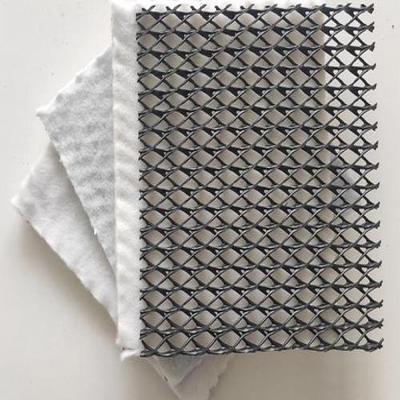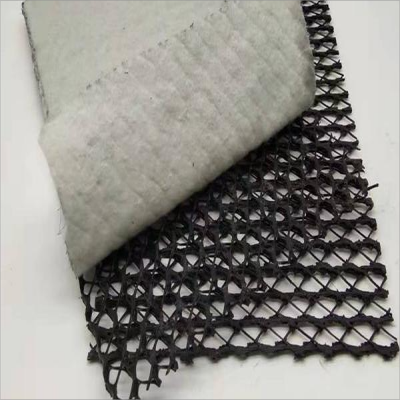Three dimensional composite drainage network It is a commonly used drainage material in engineering and can be used in landfills, highways, railways, bridges, tunnels, basements and other projects. It has a unique composite structure of three-dimensional grid core layer and polymer material, so it not only has excellent drainage performance, but also has multiple functions such as protection and isolation. Its lap joint technology can be related to the stability and drainage efficiency of the whole project.
1. Three-dimensional Composite drainage network Basic characteristics of
Three-dimensional composite drainage net is composed of flexible three-dimensional mesh core and polymer geomaterial, and its core layer is generally made of high density polyethylene (HDPE)Or polypropylene (PP)Made, has excellent load-carrying capacity and stability. The geomaterial covering the core layer can enhance its permeability resistance, and it is also equipped with a drainage pipe to quickly drain the accumulated liquid.
2. The importance of overlap technology
In the laying process of three-dimensional composite drainage network, lap joint technology is very important. The correct overlap not only ensures the continuity and integrity of the drainage network, but also improves the drainage efficiency and stability of the overall project. Improper overlap may lead to water seepage, water leakage and other problems, which will affect the quality and safety of the project.
3. Overlapping steps of three-dimensional composite drainage network
1、Adjust the orientation of the material: It is necessary to adjust the orientation of the geosynthetic material to ensure that the length of the raw material roll is parallel to the length of the anti-seepage geomembrane.
2、Termination and overlap: The composite geotechnical drainage network must be terminated, and the geotextile on the adjacent geonet core must be overlap along the raw material roll steel bars. The geonet cores of adjacent geosynthetic rolls should be connected to each other with milky plastic buckles or polymer straps, and the straps should be connected several times every 30 cm to enhance the stability of the connection.
3、Geotextile treatment for overlapping steel bars: The orientation of geotextile for overlapping steel bars should be the same as the orientation of filler accumulation. If laid between subgrade or sub-base, continuous welding, round head welding or stitching treatment should be carried out to ensure the fixation of the top layer of geotextile. If sutures are used, use the round head sewing method or the usual sewing method to meet the minimum requirement of needle angle length.
4、Connection of horizontal and vertical drainage networks: During the laying process, the connection between horizontal three-dimensional composite drainage networks and longitudinal three-dimensional composite drainage networks is very important. The place where the two drainage nets to be connected meet Non-woven geotextile Tear a certain width, cut off the middle part of the mesh core, then weld the end of the mesh core by flat welding, and finally connect the non-woven geotextiles on both sides of the grid respectively.
5、Hemming and backfilling: After laying, the non-woven fabrics on both sides around the mesh core should be sewn together to prevent impurities from entering the mesh core and affecting the drainage performance. When backfilling, the backfill thickness of each layer shall not be greater than 40 cm, And it needs to be compacted layer by layer to ensure the stability and drainage efficiency of the drainage net.
It can be seen from the above that the overlap technology of three-dimensional composite drainage network is the key link to ensure its drainage performance and engineering stability. Through reasonable overlapping methods and steps, the continuity and integrity of the drainage network can be ensured, and the drainage efficiency and safety of the whole project can be improved.
Post time: Feb-26-2025





